A surge of Western interest in anti-tank systems: new Russian tanks do not give rest!
Small and light enough to be carried by a dismounted soldier, but nonetheless possessing sufficient firepower to disable a tank or armored vehicle, guided and unmanaged anti-tank missiles over the past fifty years have proven themselves in almost all combat scenarios and today remain one of the most effective weapon systems.
While anti-tank weapon was, as its name indicates, originally designed to penetrate the main battle armor tank (MBT), the years of counter-insurgency and peacekeeping operations contributed to the creation of universal missile systems capable of combating not only heavily armored vehicles, but also light armored vehicles, manpower, buildings and structures, especially effective in settlements.
As for the Western armies, in modern requirements for anti-tank weapons, emphasis was placed on enhancing its power of action not just for MBT, but also for asymmetric opponents. However, since the number of counterinsurgency operations began to decline in the past few years, the emphasis once again began to shift towards equal threats, especially at a time when potential adversaries are adopting the next generation of armored vehicles.
Enhanced capabilities of the modern tank, including improved aiming systems and reconnaissance functions, as well as increased range of fire, stimulated the development of systems that could hit targets at large distances beyond the reach of weapons. Military customers need firing ranges for an anti-tank system of at least 2 km, and modern fire control systems (LMS) allow this to be achieved.
Reducing the masses is also one of the main directions of development of anti-tank weapons and, as defense budgets are reduced, the purchase of universal systems can increase the purchasing power of the military and save money, especially on training and other systems with a long life cycle.
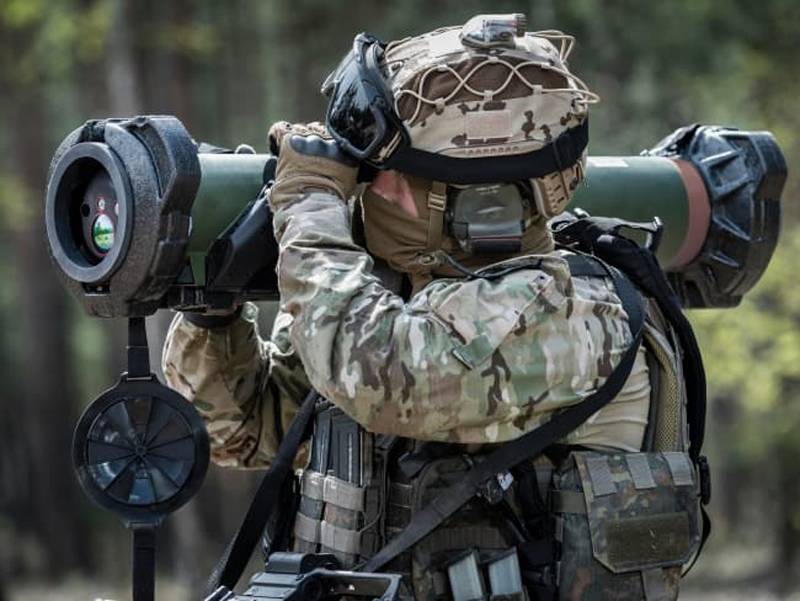
Anti-tank missile system Spike-SR
Return tank
After the end of the Cold War, priority began to be given more to the development of combat units (warheads) of weapons capable of effectively striking manpower and piercing structures, including brick and concrete walls, than on developing advanced armor.
The Spike missiles of the Israeli company Rafael exemplify this trend, since the emphasis was on combat units designed to combat a wide range of targets. “Forty years ago, tanks were the main targets,” said Gal Papier of Rafael. “Since then, much has changed, and asymmetrical wars have become the dominant trend.”
“We have a huge demand for combat units that can fight different goals, not only tanks, but also dugouts and shelters, manpower, quickly maneuvering objects ... so the Spike family developed to combat all these goals.” However, since political and military tensions in Asia and Eastern Europe continue to intensify and a return to symmetrical military actions of almost equal rivals looks increasingly likely, the problem of fighting the MBT and other enemy armored vehicles has again entered the agenda.
“There was a sudden surge of interest in anti-tank capabilities,” said Anders Valström from Saab. He called the emergence of new Russian platforms, for example, the Armata T-14 tank, a signal of the growing threat of new technologies, resulting in increased demand for improved countermeasures.
He thinks that his company’s NLAW (Next Generation Light Anti-Tank Weapon) anti-tank weapons perfectly match current and future needs. The system weighing 12,5 kg, capable of attacking directly or from above, has the following idea: if the system is widespread in infantry units, then it can become the second effective line of defense, “restricting the freedom of action” of enemy MBT.
“It should be everywhere, in every compartment, and the enemy tank commander should know that even if he hit anti-tank systems with guided missiles, he still has to worry about using systems like NLAW, because he can fly behind every corner of the building, ”he explained.
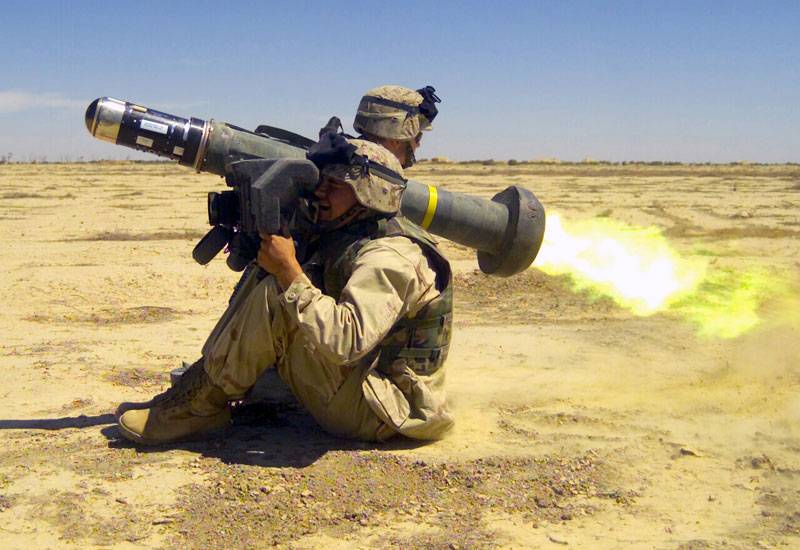
Javelin rocket launch
Out of sight
The Rafael X-Rum Spike Short Range (SR) missile mass is currently offered in a configuration that provides a range of up to 9,6 km and allows you to choose between anti-tank and anti-bunker combat units. According to available information, in May 1,5, Singapore bought this weaponry to supplement its MATNOR 2017-mm grenade launchers. In response to the growing need for longer-range weapons used outside the reach of enemy weapons, the company increased the Spike SR's range to 90 km.
“Today, good sights are installed in tanks, they work closely with long-range intelligence units ... they have become much more combat-ready. In order to cope with them, we must increase the range of the weapons systems, ”Papier said.
Although improved aiming systems and extended firing ranges pose a significant threat, the development of next-generation armor and active defense systems is a new set of challenges for anti-tank missile systems. “In the past 40 years there has been a fierce struggle between anti-tank technologies and reservation technologies,” Papier continued.
Increasing the impact and probability of hitting is the most important factor when it comes to breaking through the armor. In order to increase the probability of hitting the first shot, Saab collaborates with manufacturers of sights, such as AimPoint, which further enhances the armor-piercing ability and the damaging capabilities of its anti-tank systems, including 84-mm Carl Gustaf and AT4.
“With regard to increasing opportunities, here we continue to pay special attention to increasing the probability of hitting and range,” said Valström. - If you have a higher probability of defeat in one place, then you may well fire with a lower probability of defeat, but from a greater distance. Another way to increase the likelihood of destruction is controlled detonation and an effective warhead. This is best illustrated by the example of a new high-explosive fragmentation warhead that was developed for AT4, and the next step will be the development of a similar warhead for the Carl Gustaf system. ”
Universal combat units
Despite the obvious increase in demand for armor-piercing capabilities, many armies, apparently, do not intend to refuse to participate in the most diverse operations conducted in an increasingly dense and complex urban development. In this regard, for example, the American army invested large funds in the development of a universal ammunition for the Javelin missile system.
This system for shooting with an emphasis on the 15,9 kg shoulder, which has been in service with the American army since 1996, is manufactured by Javelin JV (JJV), a joint venture of Raytheon and Lockheed Martin. The new FGM-148 “F-model” model, which is expected to be signed from day to day, will provide soldiers with additional capabilities to combat manpower while maintaining the existing armor-piercing characteristics.
Dean Barten, melee weapons systems project manager at the US Army Rocket and Space Program Execution Administration, said he was expected to be acquired before 2000 universal combat units and "this is a very big step forward for us." "This warhead retains fire effectiveness against armored vehicles, but at the same time we have increased the striking effect on unarmored equipment and manpower."
Meanwhile, the mass production of the next version of the FGM-148 “G-model”, which is currently at the certification stage, will most likely begin in the 2021 year. Reducing cost and mass, along with improved probability of hitting are the main directions of its development.
However, Papier questioned the combat effectiveness of universal ammunition, noting that if the warhead does everything, it will never work out as much as possible on the target. “We have customers who would like to have one rocket for all occasions. If you want to penetrate thick armor, but for the same system you want to have an impact, then the high-explosive fragmentation component will reduce the armor-piercing ability. Therefore, there must be a certain compromise. Some of our customers prefer to have different warheads in different systems for different tasks. ”
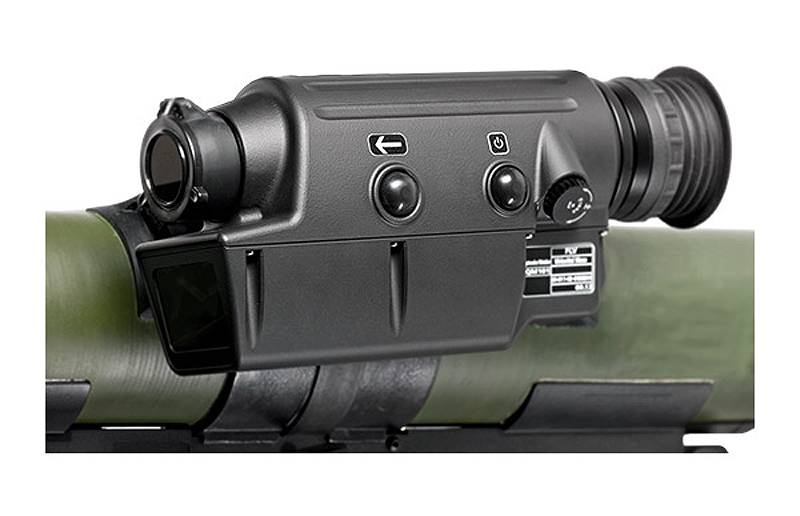
Dynahawk's QMS can be integrated into any manual weapon system.
Everything's under control
In the early stages of its development, anti-tank weapons for firing from the shoulder were mostly unmanaged, the operator needed to get closer to the target and aim with the help of primitive mechanical aiming devices. For the defeat from the first shot requires a great experience and skills, and the life of the arrow is in serious danger. In order to increase the soldier’s safety and the likelihood of hitting, many armies are now seeking to integrate fire control systems (SLA) into weapons.
Dynahawk, a division of Hensoldt, in response to the demands of the German army, developed an SLA for extended range air-assault munitions so as not to use artillery during military operations in Afghanistan. “They didn't have the technology. Said Tadele Zeissig of Dynahawk. “Therefore, we began the development of the so-called executive element with the caliber 90 mm ... The goal was to use air exploded munitions at a distance of about 1200 meters.”
“When you want to get into anything at this distance from the shoulder weapon, you need an SLA with a laser rangefinder, optical zoom and sensors. We analyzed the market and saw that there was a need for three different SLAs. First of all, you need anti-tank ammunition, then universal ammunition and, finally, programmable ammunition. In subsequent years, the popularity of programmable anti-tank ammunition will increase, as well as the need to increase the distance of defeat. "
Saab and Dynamit Nobel, the latter producing the RGW90 grenade launcher, are currently the main customers of Hensoldt. For the company, the emphasis was on the production of MSAs, which provides a high probability of hitting at long ranges while minimizing weight and size. “Saab and Dynamit Nobel are fighting for every gram, trying to reduce the burden on the soldier,” said Zeissig.
The current trend, which determines the development of the SLA, is to determine its place on the digital battlefield, simplifying its integration into the military command and control system. “In the medium and long term, each OMS should find its place on the digital battlefield and in every digital combat control system. This is a big problem and most MSAs are at the beginning. Different customers take different approaches to digitizing the battlefield. In Germany, a discussion has begun on how much digitization they want and how information flows should be distributed. ”
The improvement and dissemination of active defense systems is expected to have a significant impact on the anti-tank sector and on the SLA. “We are keen to take an active part in this big discussion about the active protection of tanks,” said Zeissig. “There is no solution yet to counter active defense, so if you want to program a warhead to shoot three false targets, and then the original warhead, then you need an LMS.”
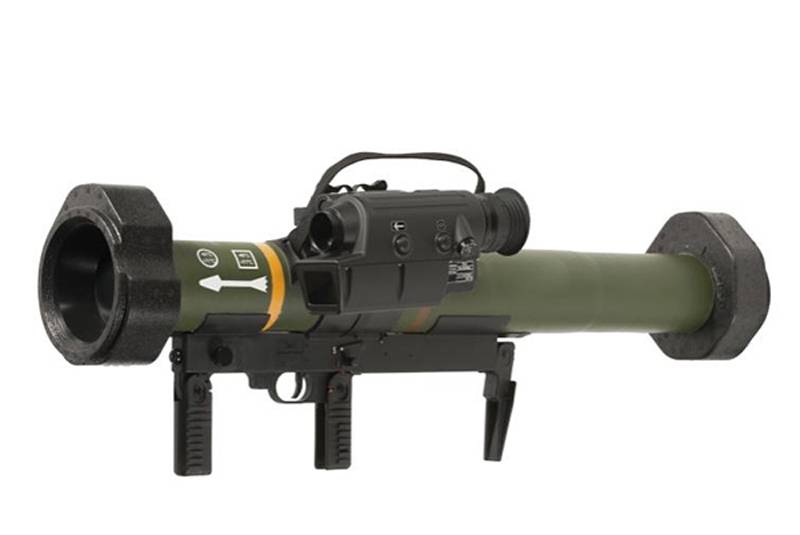
OMS currently allowed to increase the accuracy of anti-tank missiles at distances 2 km and more
Easy to get rid of
In accordance with the program of the French army Roquette Nouvelle Generation, Saab, together with the Nexter Group, received a contract for $ 31,7 million for the supply of AT4 grenade launchers in various configurations.
The contract included three single-use AT4 grenade launchers, all intended for use in confined spaces: the AT4CS ER, the extended range anti-tank variant, AT4CS AST, designed to destroy and pierce passages, and the AT4CS NOT with a high-explosive anti-personnel anti-personnel component.
After signing the supply contract in 2014, the system is still in the process of qualification by the French authorities. However, there is hope that it will end this year.
The AT4CS variant was developed after the French Defense Property Administration issued “strict requirements for conducting operations in confined spaces” in 1996; This was due to the fact that the Western armies began to develop tactics for the conduct of hostilities in human settlements. It included the use of missiles to make passes and protect against light armored vehicles and manpower that could be launched from rooms, for example, rooms in an apartment building. “You must fire not only at buildings, you must be able to fire also from buildings,” said Valström.
AT4CS equipped with a "dual-mode warhead"; This means that a single projectile can be used for different purposes. “With the switch in the first position, you punch a hole in the wall, making one more additional entry point, moving to the second position allows you to switch to detonation of the warhead with a delay, that is, inside the room,” said Wahlstrom.
While the range of tasks in which these systems can be deployed has expanded significantly over the past two decades, it is unclear how much lighter rocket launchers will cope with heavier missiles, which often start with tripods and are serviced by calculation.
In addition to the AT4 grenade launcher, France complements its anti-tank capabilities with MBDA's new Missile Moyenne Portee complex, whose missile launches from a tripod launcher. The 27 kg system with self-homing on the “shot-and-forget” principle and the operator can reach the 40 km distance, although a source in the French army stated that the 5 km range has been reached so far. The Army will purchase a total of 400 launchers and 2850 missiles to replace the existing MILAN complex.
The US Marine Corps (USCM), however, will undergo a significant reorganization of its standard equipment, during which the number of Javelin complexes will significantly increase and the number of heavier TOW missiles launched from the tripod will decrease. According to current plans, the latter will be completely decommissioned. The commander of the USMC General Neller announced that the reconfiguration is part of a larger program to increase the lethality and speed of the Marines.
Despite this decision by the ILC, Barten explained that the TOW complex would be abandoned in the American army, also because it provides opportunities that the Javelin complex cannot provide. “A heavier large missile flies a little further, and the size of the warhead is much larger. Javelin does not have the attractiveness that TOW has, he said. - When we looked at the technology that is available today, we realized that we would have to sacrifice too much when moving to one rocket. The army decided that in the foreseeable future they will have their own anti-tank missile system. ”
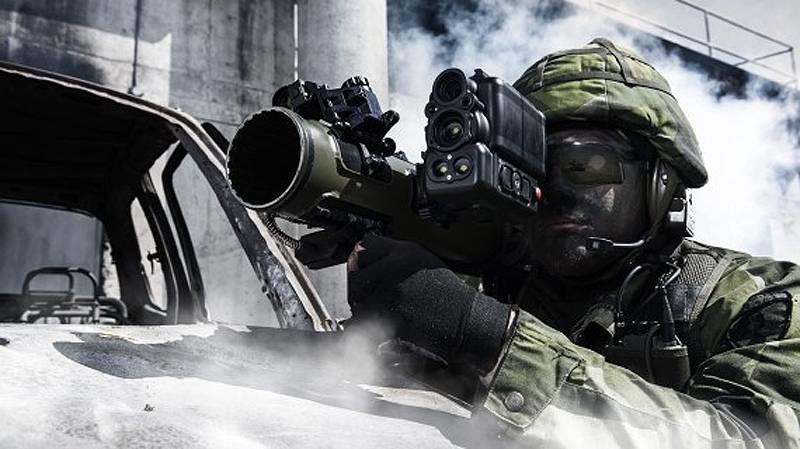
The increase in the damaging effect and the probability of hitting a rocket is significant when it comes to penetrating tank armor
Multi-platform integration
Since the military intends to further reduce the cost of new weapons, their maintenance and training, one universal anti-tank solution for all types of troops becomes an attractive option. The technologies available today allow the integration of a similar system to other military platforms, including armored vehicles and attack helicopters.
Rafael, for example, offers integration not only of its Spike family of missiles, but also of optical-electronic systems and guided and unguided rockets. “Our offer has expanded from one rocket to the full range of Rafael products, which radically increases the capabilities of customers,” he said.
In the same sphere, the US military is active, which is implementing several programs aimed at increasing the combat effectiveness and efficiency of the armed forces. "Public investment allowed us to get not only a complex with a launcher on a tripod ... but really expand the scope of Javelin on tracked and wheeled platforms," said the president of the joint venture JJV. - This makes it possible to increase the flexibility of the combat use of the Javelin armament complex.
JJV company tested the possibility of integrating the complex into a helicopter attack, while the installation on the vehicle was already implemented on the Stryker 2 armored reconnaissance regiment deployed in Europe. In accordance with the urgent requirements of the US command, the Common Remotely Operated Weapon Systems remote control unit (CROWS-J index) is installed on these machines.
The current pace of technological development, as well as geopolitical shifts and potential conflicts define a new era of anti-tank weapons. However, time will tell whether the armies want to have more compact systems, perhaps with less “fire efficiency”, but with greater flexibility and mobility, or larger systems that are typical anti-tank weapons that can have a greater impact on the target. However, for many armies the answer lies somewhere in the middle.
Materials used:
www.shephardmedia.com
rafael.co.il
www.hensoldt.net
www.eurospike.com
militaryarms.ru
www.saabgroup.com
www.wikipedia.org
en.wikipedia.org
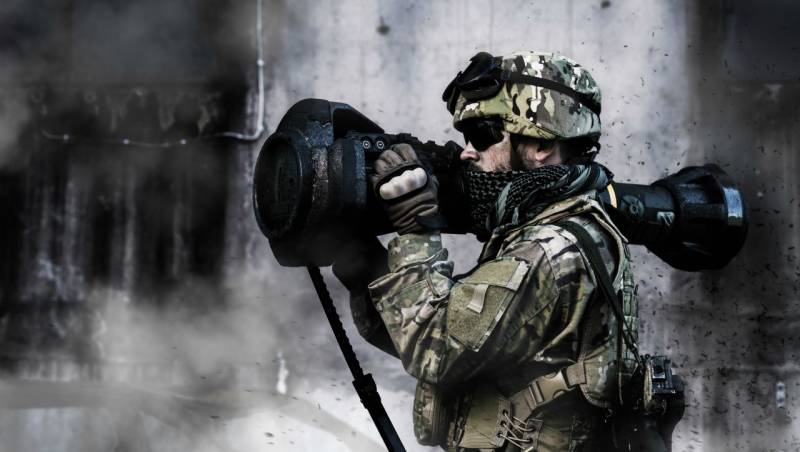
Information